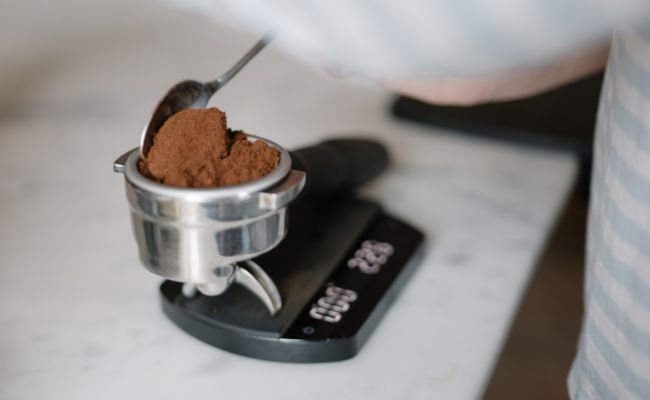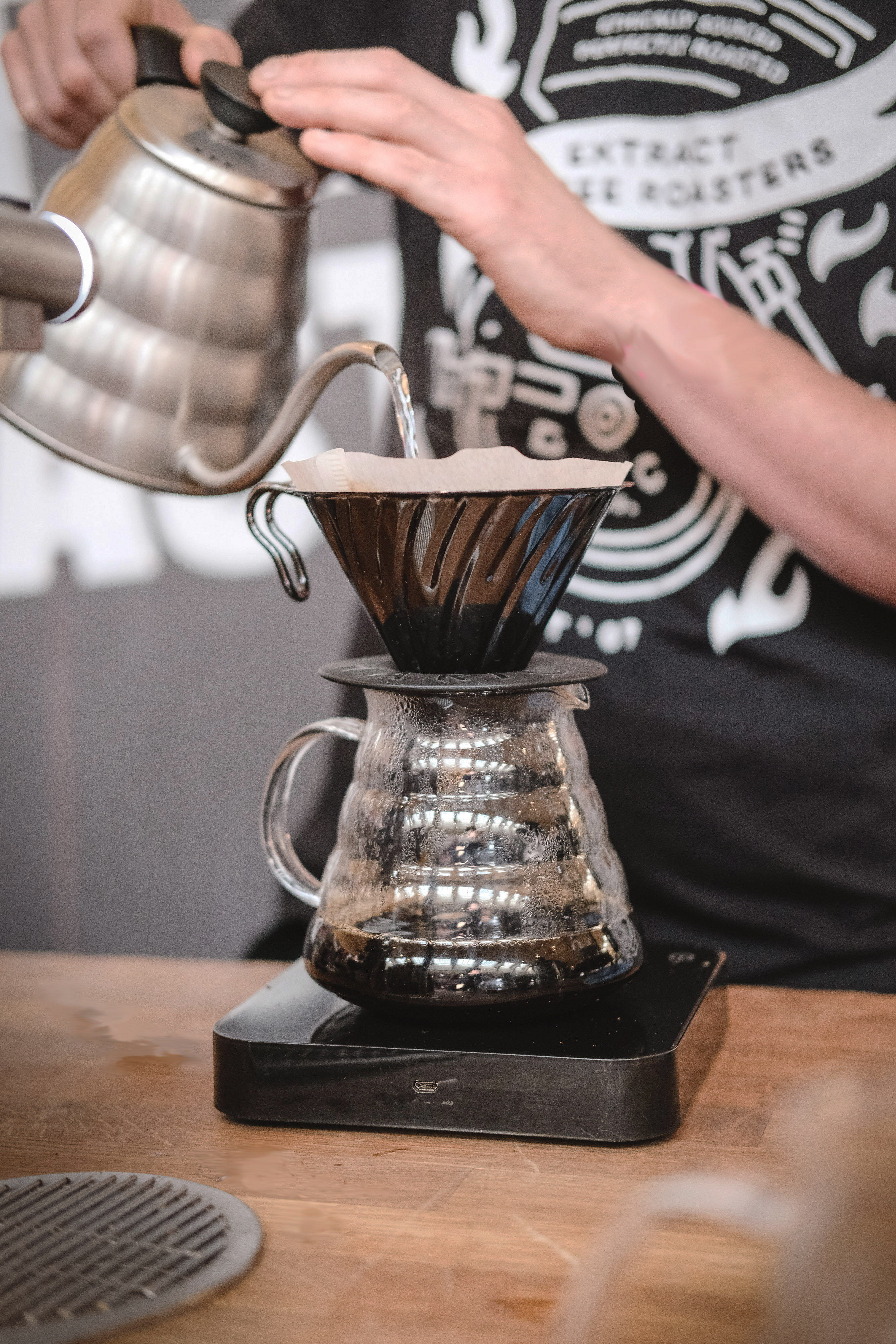
6 ways to make your coffee taste better at home
Want to know how to get your speciality coffee tasting better at home? In this blog post we share some easy life hacks to make your coffee taste better and improve your home barista skills.
These coffee tips can be applied to filter coffee or espresso and a wide range of brew methods. So, whether you’re making coffee on a domestic espresso machine, brewing up a cafetiere, a filter brew or an aeropress, these quick coffee hacks should help.
Looking for free barista training on a commercial espresso machine? Check out our free online barista training guides.
WHOLE COFFEE BEANS TASTE BETTER THAN PRE-GROUND COFFEE
As soon as you grind your coffee it can start to lose freshness. This is to do with contact time between your coffee and the air around it. As coffee oxidises it starts to stale and loses some of its more vibrant are delicate flavours.
In speciality coffee competitions, the SCA (Speciality Coffee Association) insist on coffee being brewed within 15 minutes of being ground to keep it at optimum freshness.
So, if you can keep it whole bean right up until you brew your coffee, you’ll notice a big difference in flavour.
That means, a coffee grinder is a must-have piece of coffee brew equipment.
For brewing filter coffee, the Wilfa Svart coffee grinder is an affordable and long-lasting home option (mine's been used daily for 5 years and is still going strong!)
For espresso machines you need a grinder which can grind much finer otherwise you risk clogging up your espresso machine. The budget options we’ve tested are rarely up to scratch, the Rocket Faustino Grinder is the best domestic coffee grinder we’ve tested.

WEIGHING YOUR COFFEE IS ALWAYS WORTH IT
The extra time it takes to weigh out your coffee will give you a much more consistent brew.
It reduces the risk of your coffee being over or under extracted and means that if you try out a recipe which you really like, you can easily recreate it
In the roastery we use the Felicita Inline Coffee Scales.
These are purpose-built coffee scales, they are super-precise and weigh to within 0.01 grams, have a built-in timer which is handy for timing your brew and have a bluetooth connection to the Felicita App for professional and home baristas looking for that next-level functionality.
If you don’t have any coffee scales at home, and aren’t looking to invest in a set now, digital kitchen scales will do the job.
Step one is weighing your ground coffee.
For espresso you want 18g. For filter, use 6-7g per 100ml water. (more on brew ratios a bit later in this post).
If you're brewing coffee in a filter or cafetiere, the next step is weighing your water.
For espresso, some machines will pour out a pre-weighed amount of water. Others, you need to time and weigh the shot and manually stop the flow. You can usually change these settings in your machine's volumetrics settings.
Weighing water is more accurate than using a measuring jug and, if you're already brewing on top of your scales it's actually easier too.
Most digital kitchen scales have a tare function, so you can tare the scales to zero before adding your coffee, then before adding your water and brew your coffee on top the scales, checking the measurements as you go.
So, a set of digital scales can totally transform your coffee for very little extra effort.
By weighing both coffee and water you can make your brews more consistent and can start to experiment with different recipes for different coffees, which is, we think, part of the fun.
If weighing is a step too far on your personal faff-scale, and you're still not convinced, I can tell you that a level dessert spoon of coarse-ground coffee (like for a cafetiere) is about 8g and will let you work out your spoonfuls from there.
The Hario V60 also comes with a measuring scoop which will give you a rough indication of volume.

FILTERED WATER WILL IMPROVE THE TASTE OF YOUR COFFEE
When brewing coffee, water matters. After all, it makes up the biggest part of the final drink.
The coffee we roast at Extract is high quality, speciality grade coffee. One of the reasons we love these coffees are their interesting flavour notes, often brought about by acidity in the coffee. That's why sometimes in our coffees you might taste complex fruit flavours like stewed plums or zesty citrus fruits.
There are varying degrees of water hardness in the UK. That's the amount of calcium and magnesium in your water. The calcium in your water neutralises some of the more vibrant flavours which might be present in your coffee. If the kettle you're using to boil your water is "scaled up" with a build up of limescale, this will impact the taste of your coffee too.
The way to get around this is by filtering your water.
In the roastery, we use BWT water filters which are specially designed for commercial espresso machines.
Whilst a commercial water filter is not needed in the home, we do recommend that you use filtered water when brewing your coffee. Not only will this make your coffee taste better, it will also extend the life of your kettle and / or espresso machine too.
In terms of temperature, your water should be hot, but not boiling otherwise you risk scorching your coffee. 94 degrees is perfect. (or a boiled kettle left for one minute will work fine too). If you're brewing coffee in cold weather, or an especially cool environment, check out our recent blog with tips for brewing coffee in colder weather.

LEARN THE GOLDEN RATIOS FOR COFFEE
Different coffees need slightly different brew recipes. Different people enjoy different strengths of coffee too so this can make finding the perfect coffee recipe tricky.
However, there are basic ratios of water : coffee which are great starting points to help you find the perfect coffee recipe to your taste.
FILTER COFFEE BREW RATIO
For filter coffee and immersion brew methods, such as a V60, Cafetiere or Chemex we recommend 60-80g of coffee per 1000ml (1 litre) water.
If you’re planning to add a dash of milk to your coffee, a stronger brew will balance out the sweetness of the milk, so you might lean towards 70g+ for your brew.
If you like your coffees quite light and delicately brewed, 60g to 70g may be more to your taste
It's not that often that you brew a litre of coffee at home, so here's a little breakdown for easy maths.
On average, a mug holds about 250ml liquid and a teacup holds about 150ml liquid.
So, if I'm brewing 2 coffees at home, I'd use about 35g of coffee for two large mugs or, 21g for two smaller cups. That's based on 70g per litre, so right in the middle of our golden ratio.
There's more tips and advice in in the coffee brew guides on our roastery blog.
ESPRESSO COFFEE BREW RATIO
For espresso, we start with a ratio of 1:2. That means we want the amount of liquid we get out to be double the weight of coffee we put in.
At Extract, we always brew espresso as double shots using a ratio of 18g of ground coffee in for 36g of brewed coffee out.
A key part of brewing a tasty espresso is making sure that the coffee is perfectly extracted. You can tell this by your shot time, how long it takes for 36ml coffee to come out of your machine. We recommend a shot time of 25 to 30 seconds.
If your shot comes out faster, your coffee may be ground too coarsely and your coffee will be sour and under extracted. If your shot comes out slower, your coffee may be ground too finely and your coffee will be bitter and over extracted.
GRIND SIZE AFFECTS THE TASTE OF YOUR COFFEE
We're starting to get a little more technical now. Well done if you've made it this far!
As I touched on in the previous coffee tip, how finely or coarsely your coffee is ground will have an impact on the extraction of your coffee. Or, in plain english, how much or little coffee flavour is extracted from the grinds into the liquid.
The more contact time there is between the grinds and the water. The more flavour will be extracted.
If your coffee is ground coarsely, water will flow through the grinds quickly. So you need a longer contact time to extract a good flavour. That's why we leave a cafetiere to brew for 4 minutes before plunging.
If your coffee is ground very finely, the water will take longer to flow through the grinds and will have more contact time with each particle of coffee. If there is too much contact between the water and grinds, the coffee may become over-extracted resulting in an unpleasantly bitter taste. That's why for espresso, you have a much shorter contact time of just 25 to 30 seconds.
Once you’ve got your head around grind size and coffee extraction, you can use this knowledge to troubleshoot your coffee brewing and unlock a whole world of experimentation!
If you find your coffee too thin, weak, or lacking in some way try upping your dose, fine your grind or extend the brew time.
If your coffee tastes too strong, or bitter in any way you might want to decrease your dose, coarsen your grind, or decrease brew time.
EXPERIMENT WITH DIFFERENT COFFEE RECIPES TO FIND WHAT YOU LIKE
Experimentation is absolutely encouraged when it comes to coffee!
Here are three different taste tests, which play around with water, brew time and grind size which you can try at home. See if you can find
1. Try a taste test of filtered and unfiltered water with your coffee. Do you notice a difference in flavour?
2. Keep the weights and, temperature and time the same, but try grinding your coffee coarser or finer. See what differences you can notice in the body of the coffee (how it feels in your mouth) and the flavours.
3. With a cafetiere or Aeropress, try shorter and longer brew times. See how these impact the flavours you can taste. Which brew length do you enjoy the most?
Some experiments will work. Some won’t! But over time, you’ll be able to create your own coffee brew recipes and coffee ratios.
This is where the fun really starts!
